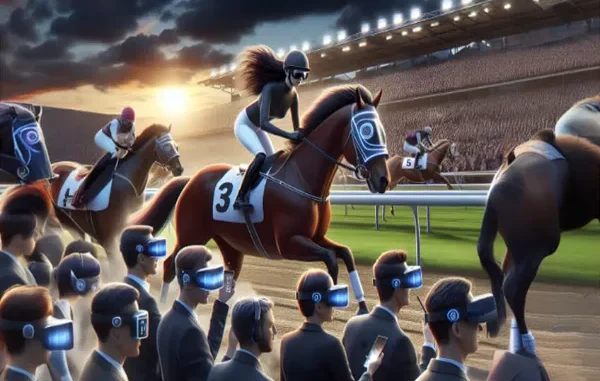
And they’re off! The thrill of watching horses racing against each other has been entertaining people for thousands of years.
The sport can be traced right back to ancient civilizations who organized chariot races to amuse their citizens. Horse racing continued to be popular among all classes in Europe through the Middle Ages – and by the 18th century it was starting to become a seriously organised sport.
England’s pioneering Jockey Club was established in 1750 and this formed an important catalyst for creating formal racecourses, rules and organized competitions. From there the sport spread across the world – with countries like the United States, Australia, and various Asian nations particularly enthusiastically adopting the sport.
Over the last century horse racing has evolved into different formats such as flat racing, steeplechase and harness racing. Major races like the Kentucky Derby, the Grand National and the Melbourne Cup are global sporting events.
In all its forms horse racing remains hugely popular around the world and attracts a thriving global betting community.
Today’s horse racing world
In recent years, the horse racing experience has been enhanced by plenty of ingenious new developments.
The latest innovations include improved track surfaces, advanced timing systems and equine health monitoring devices. Safety improvements for both horses and jockeys include stricter regulations regarding track surfaces, stricter veterinary monitoring and new safety equipment for jockeys.
At the same time, horse racing has become more and more global, with events like the Dubai World Cup and the Breeders’ Cup, attracting competitors from different countries.
Social media, streaming services and interactive betting platforms have attracted a much broader audience. Fans can instantly access everything from the Kentucky Derby odds to a single horse’s performance statistics on their screen.
Which technologies have made the biggest impact?
Technology has revolutionised some parts of horse racing. The biggest changes have been these:
Track Surfaces
Advanced surfaces have been developed using materials like synthetic fibers. These can often provide better all-weather traction and shock absorption for horses.
They can also help reduce injuries and provide a more consistent racing experience – regardless of the weather.
Timing Systems
State-of-the-art timing systems have completely changed the accuracy of race timing. We previously relied on photo-finishes to determine the winner in a close race.
There is now precise measurement of all race times and the margins of victory. This information is vital for bettors, trainers and owners in evaluating horse performance.
Monitoring the Horses
Technology now means the widespread use of health monitoring devices for horses, including wearable sensors and tracking systems. These monitor the animal’s vital signs, activity levels and overall health.
Trainers can detect early signs of injury or illness. It means detailed personalized care for each horse is the norm.
Genetic Testing
Sophisticated genetic testing allows more accurate pedigree analysis and identification of factors that influence a horse’s racing performance. Breeders can use this information to make informed breeding decisions and breed better performing horses.
Virtual Reality and Augmented Reality
Virtual reality and augmented reality technologies are now used to enhance the overall fan experience. They can provide immersive views of races giving a life-like experience of the excitement of being at the track – even when watching from the comfort of your home.
Betting Platforms
Online betting platforms have become increasingly sophisticated. The sites now offer a much wider range of betting options and real-time access to race information.
Mobile betting apps allow fans to place bets conveniently from anywhere.
The future of horse racing
Industry insiders expect that technology will continue to play a significant role in horse racing. Look out for further advancets in track surfaces, equine health monitoring, data analytics and fan engagement technologies.
Changes in public attitudes mean that efforts to improve the welfare of horses and participants will remain a priority. This means there will be stricter regulations, enhanced veterinary oversight and innovative safety equipment to reduce the risk of injuries and ensure the well-being of horses throughout and after their racing careers.
Horse racing will become increasingly globalized, with greater collaboration between racing organisations around the world. International racing events and cross-border partnerships will promote the sport on a global scale – which will attract more and more diverse audiences and competitors.
Environmental sustainability will become a more prominent focus with racecourses reducing their environmental impact by using renewable energy, recycling programs and water conservation measures.
Online betting platforms, streaming services and social media engagement will grow while virtual and augmented reality will increasingly enhance the fan experience and attract new audiences.
The future of horse racing will be shaped by all sorts of new technologies but industry experts predict that one thing is certain: the enduring appeal of the sport and its rich heritage suggest that it will continue to thrive in the years to come.
Leave a Reply